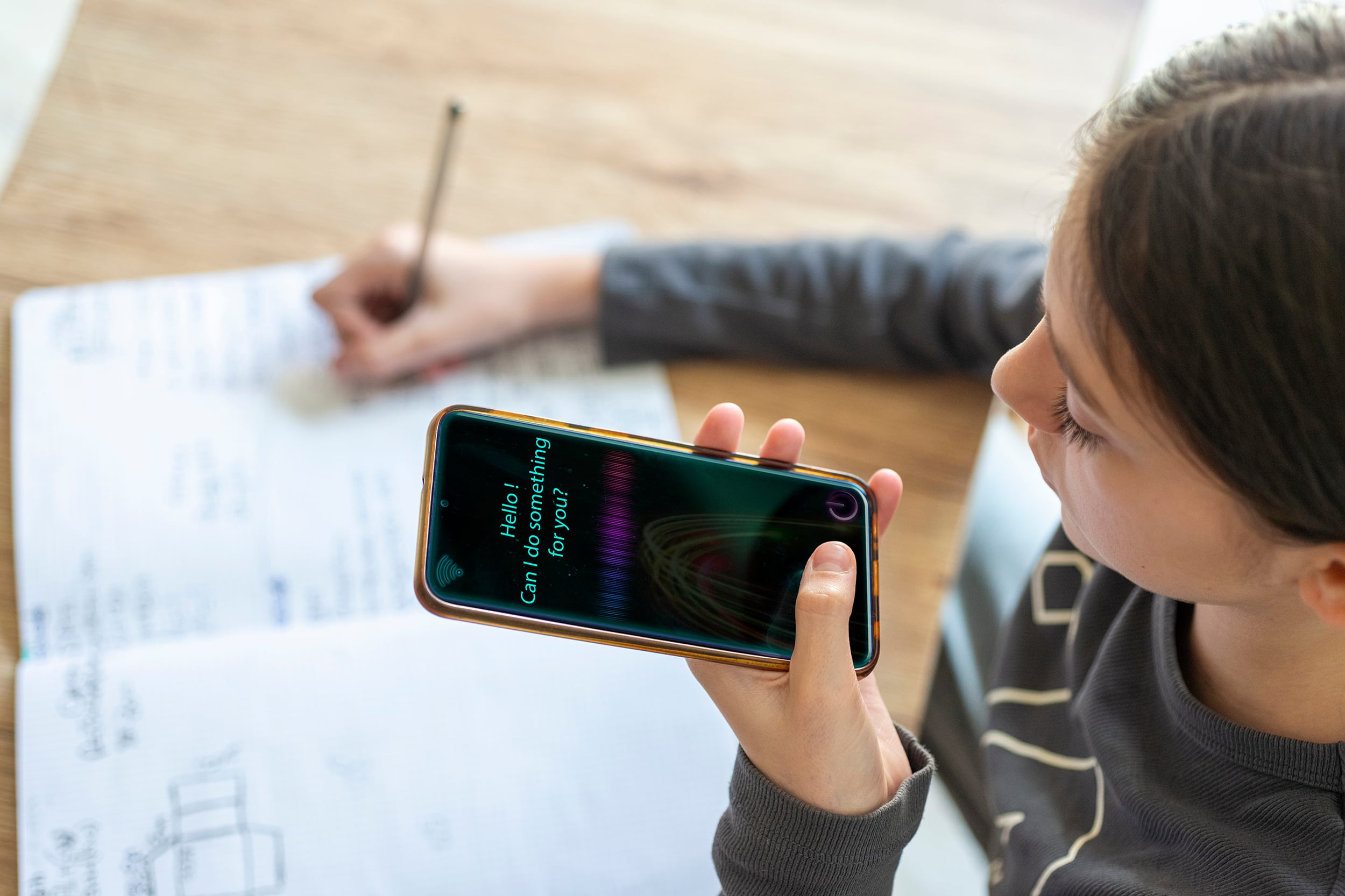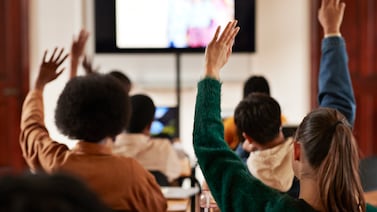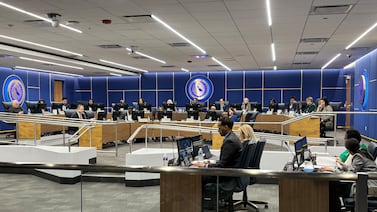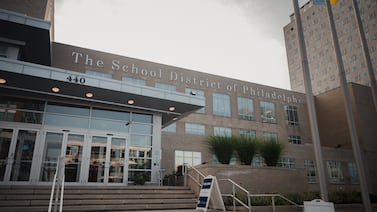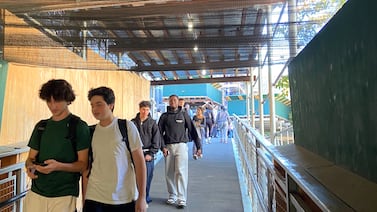Chalkbeat Ideas is a new section featuring reported columns on the big ideas and debates shaping American schools. Sign up to attend our first virtual event focusing on new insights from learning loss data with Emily Oster.
At a recent education technology conference in New York City — where companies were hawking their products and speakers were predicting great benefits from artificial intelligence — one attendee offered something of a heretical perspective.
“Right now, as it is, AI has had a net negative impact on students,” said Dacia Toll, co-founder of Coursemojo, an AI-powered teaching assistant.
Later, Toll told me that she’s convinced that there are many potential benefits of AI in education.
“It’s going to be a complex situation — there are going to be bad use cases, good use cases,” she said. “The jury is out on what the net impact will be.”
At this moment, our understanding of the impact of generative AI in schools is muddy and uncertain. But some clear realities are emerging. These are my three theories for what AI will and won’t mean in classrooms over the next several years.
Cheating is a big problem and it’s not going away
Ask a high school student or their teachers about AI, and there’s a good chance they will say that an alarming number of teenagers are using AI to write their essays, solve their math problems, and finish their assignments.
In one recent survey, fully 100% of high school principals said they were concerned about “academic integrity” challenges created by AI. A majority reported being “very concerned.”
Cheating is difficult to quantify, so it’s hard to prove there’s been an increase in it. AI advocates emphasize that cheating is not a new phenomenon. What is new is that generative AI has made it easier and therefore more tempting.
“The degree to which you can relatively easily find students who will tell you that they are doing complete assignments — and large numbers of them — entirely with this machine is different,” says Justin Reich, an MIT professor and ed-tech expert. He recently hosted a podcast series called “The Homework Machine” based on interviews with dozens of teachers and students. The theme: Many students are taking advantage of this innovative new cheating tool.
The implications are troubling. Some students are simply doing less work and learning less. Even a majority of high school students in one poll said they fear AI will harm their critical thinking.
In turn, classroom trust may be falling as teachers become worried about cheating and students fear being falsely accused. “You become a paranoid person. You distrust every single thing your students give you,” Sara Falls, a high school English teacher, explained on one of Reich’s podcast episodes.
It’s hard to see a clear way out of this conundrum. Efforts by teachers to monitor misuse lead to counterefforts to avoid detection, often with the help of sophisticated cheating tools.
Many teachers want more support, but most say they’re getting little. In the next few years we will see if schools start creating systematic strategies to combat cheating or if teachers continue to be left largely on their own.
AI will become a ubiquitous teaching assistant
Sandy Mangarella, a high school English teacher in New Jersey, used to spend upwards of an hour apiece on letters of recommendation for her students. Now, with artificial intelligence a letter takes only a few minutes.
“I write really good ones now, even better than I used to,” she says. Mangarella, who has been teaching for 44 years, typically uses AI multiple times a week for other things too, like brainstorming lesson ideas or getting a second take on a student essay.
Teachers are text generation machines. They are constantly drafting worksheets, classroom newsletters, special education plans, rubrics, presentations, notes home, quizzes, essay outlines, exit tickets, take-home work packets, and more. What generative AI is very good at is producing text.
AI is not yet a daily part of the work life for most teachers. Only 1 in 8 use it on a weekly basis for teaching-related work, according to a recent poll. About half don’t use it at all. Yet the experiences of Mangarella and others suggest that as more teachers get comfortable with the technology, AI will become a common, perhaps universal assistant for educators.
This comes with some risks. Teachers themselves could engage in the “cognitive offloading” we fear for students, using less care putting together lessons or relying on lower-quality material. Some advocates also worry about bias, particularly if AI is drafting special education plans.
But the upside of AI as a teacher’s assistant is substantial: It could free up teacher time — one of the most valuable commodities in schools.
AI will never be a supertutor (but it could help some students)
At last month’s ed-tech conference in New York City, OpenAI’s Vice President and General Manager of Education Leah Belsky touted the great benefits of tutoring. “We all aspire for every student to have that one-on-one tutoring experience,” she said. “ChatGPT and AI could one day make that possible.” This could be incredibly impactful, Belsky said, citing a 1984 study that claimed tutoring could vault the average student to the 98th percentile of performance.
This paper, by the late University of Chicago professor Benjamin Bloom, has been the touchstone of technologists for decades. The hope has been that technology can replicate the value of a human tutor at a fraction of the cost. I learned about this work several years ago when computer-based “personalized learning” advocates, like Mark Zuckerberg, were citing it.
Yet those aspiring for such dramatic learning gains from AI are likely to be disappointed. This was the case for personalized learning enthusiasts.
Through a spokesperson, Belsky of OpenAI declined to comment for this piece.
The problem is that Bloom’s results were wildly unrealistic, as detailed in a 2024 Education Next article. Gains of such size have not been widely replicated on math and reading tests. Bloom only found these improvements when applied to the novel subjects of cartography and probability. Modern studies of large-scale human tutoring programs show it is one of the most effective strategies for boosting learning — but results are about a tenth the size of what Bloom reported.
It’s risky for AI advocates to tout massive potential gains. “If that’s the bar, then the current AI capabilities are not set up to achieve that goal,” says Toll of Coursemojo, noting that AI is not as good as a human tutor. Still, she believes the bar shouldn’t be set unrealistically high and that the technology does have the potential to boost student learning.
Matt Barnum is Chalkbeat’s ideas editor. Reach him at mbarnum@chalkbeat.org.

